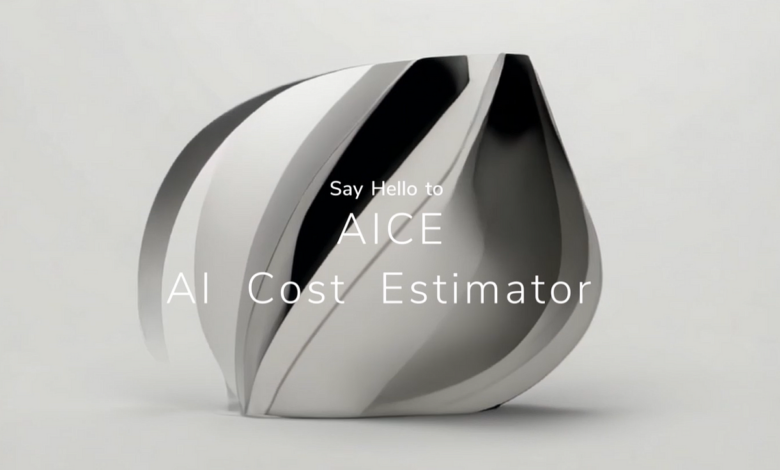AICE Generative AI Model. AI Cost Estimator | by Marawan Ismail | May, 2024

AI Cost Estimator
AICE AI project is a Software with a trained AI model used for Cost Estimating purposes to generate quotations and tenders for Engineering contractors in the Marine and Oil and Gas industries.
Why we need AICE, the story behind the product:
During my career as an engineer, I specialized in Cost Engineering, which is commonly known as Cost Estimating in the Marine and Oil and Gas industry. My daily work involved estimating costs for oil rigs and vessels.
When a client would send me a tender or a Request for Quotation (RFQ), asking for pricing on a project (such as drydocking or refurbishing an oil rig), the cost estimation process was time-consuming. Unfortunately, most clients didn’t fully grasp the effort required to create accurate quotations. They often demanded that prices be submitted within a tight two-week timeframe. Meanwhile, I’d also be juggling another project that needed my attention.
The cost estimating department operated with a small team of just two or three people. When I asked for additional help, the response was always the same: “We don’t have enough budget to train more staff.”
Once a project kicked off, I had to closely monitor costs and provide additional quotations for any extra work.
All these challenges led me to wonder: Why wasn’t there software available to evaluate projects and streamline the process? The best I could do was develop an Excel spreadsheet to assist with cost calculations — something many engineers resort to. But beyond that, there seemed to be a gap.
Then, after leaving the industry and immersing myself in software development, I witnessed the rise of Generative AI, particularly with chat-based models like GPT. Suddenly, the dream resurfaced: Could we harness AI’s limitless potential to create better software tools for engineers worldwide?
Main objectives of the project and benefits:
1. Spedding the process to generate Quotations and tendering.
2. Speed the evaluation of the cost of the project.
3. Using less manpower to generate quotations and tenders.
4. Reduce the risk of making mistakes in costing calculations.
5. Help beginner Cost Estimators to generate Quotations and Tenders with less experience with the supervision of a senior Cost Engineer.
6. Help to collect data regarding the project.
7. Conducting Cost project by analyzing the data from the project.
8. Using the AI to cost analysis to generate a graphic chart to study the cost and help finance to reduce the cost of the project in the future.
9. Help the project planner to conduct cost vs production analysis to see the keystones in the project and determine the risk using a financial model.
10. Help to develop the cost sheet for sales and conduct market study and analysis.
11. Less time for the Cost estimating to train training.
12. Making the Cost Estimator focus on more productive tasks rather than spending a long time typing and analyzing the tender and focusing on how to reduce the cost and make the project cost-effective for the company.
More information and development will be conducted during the testing and trial period for the software according to the client’s needs and type of industry.
Implementation-
There are 2 ways to implement the project.
Cloud Hosting –
The most cost-effective and easy way to implement this project is to train the FM model in the cloud (Google Cloud, AWS, Azure) the company will use the cloud infrastructure to control the model and store data.
Making the AICE model easy to access for the Cost Estimators and the rest of the project team (Project manager, Cost Controller, and Project Planner).
Generating easy data for reset of the management team to analysis for (CEO, Directors, board members, investors) with easy access in the cloud.
Hosting in local environment –
The company can choose to host the model in their local environment in their server by downloading the model and building an interface in their system for internal use and guaranteeing the safety of their data limiting the access to the model to the commercial team only and the project manager as the data will be only in their computer system and they have more control and cost-effective as they do not have to pay for the cloud services or the storge.
By using technology like Py torch to train the model in their local machines.
Software user interface –
This wireframe for the AICE software is an example of what the product will look like, I will explain elements of the design and the functions.
As we see in the picture above the following elements –
1- Manual — it will explain how to deal with the Software and how to use it effectively to generate the Quotation.
2- New Project — the first feature the user will see in the software, it will take them to start a new project on the next page, I will explain the items in detail later.
3- Current Project — this future will navigate the user to the last project he is working on quickly and easy.
4- Saved projects — the feature will navigate the user to the archive, where he can find all the projects and data related to his work.
5- Settings — this feature will navigate the user to the software setting.
The next page is the new project page it will include the following –
1- Project information — including all the info regarding the project including the cost Estimator name, Date, Project manager name, Client name, contacts Emails, and phone numbers), all this information will stored on this page and you can access it during the project.
2- Price list — also known as a rate sheet in an Engineering company, it will include all the prices for the services like (welder hourly rate, mechanical fitter hourly rate, and other kinds of services like cleaning per 2m in the engine room).
3- Works schedule — this feature will include the time study and working hours for different services.
4- Scope of work — here where the magic happens with our AI model, the upload button feeds the AI model your RFQ and a text box to write the notes you want the model to by attention to (prompt) and generate a button to give the result (Quotation).
5- Project Settings — this feature will allow the user to make changed to the model like (temperature, tokens) and other features the user wants to change.
Data Example to Train the Model –
The data we need to provide the AI will be 3 types of data –
1- Example of the scope of work the user will prompt the model it will include the type of work needed for the job (installation of parts, welding, pipe line installation, Construction, inspection, … etc.)
2- The price list of these services.
3- Working hours are needed to complete the job.
4- Example of the cost calculations how it is done, how the Cost Estimator gets to price, and what profit margin we add to the total.
5- Example for the quotation layout.
Note:
The specific dates will vary based on the company and the nature of their work (whether it’s in marine, oil & gas, civil engineering, construction, or heavy engineering). It’s important to note that the AI generative model can only be trained using company-specific data; it cannot serve as a universal model for all engineering companies. Each company has distinct working hours and pricing structures.”
Prototype of AI model we will use to power the Web Application –
This AI model testing is for testing the idea and technology to demonstrate the possibility of this technology and where it can take in the Engineering field.
Example-
This simple example uses the advanced prompt engineering method to demonstrate the idea is possible in real life, not just sketch, the real model has to be trained on real-life data according to the company’s needs and objectives.
This prompt was used in Google Cloud services, with Gemini Pro as the model of choice.
As we see in the prompt and the result the model did manage to provide the Quotation as accepted.
Please note that the results are not 100% accurate, as the model still requires further training beyond just prompting. I strongly discourage relying solely on prompting as the primary method for generating quotations. Additionally, the individual assigned to monitor and test this model should possess substantial experience in cost estimating and technical knowledge in engineering.”
The idea is open for anybody to use and if there are any questions, I will be happy to answer.



